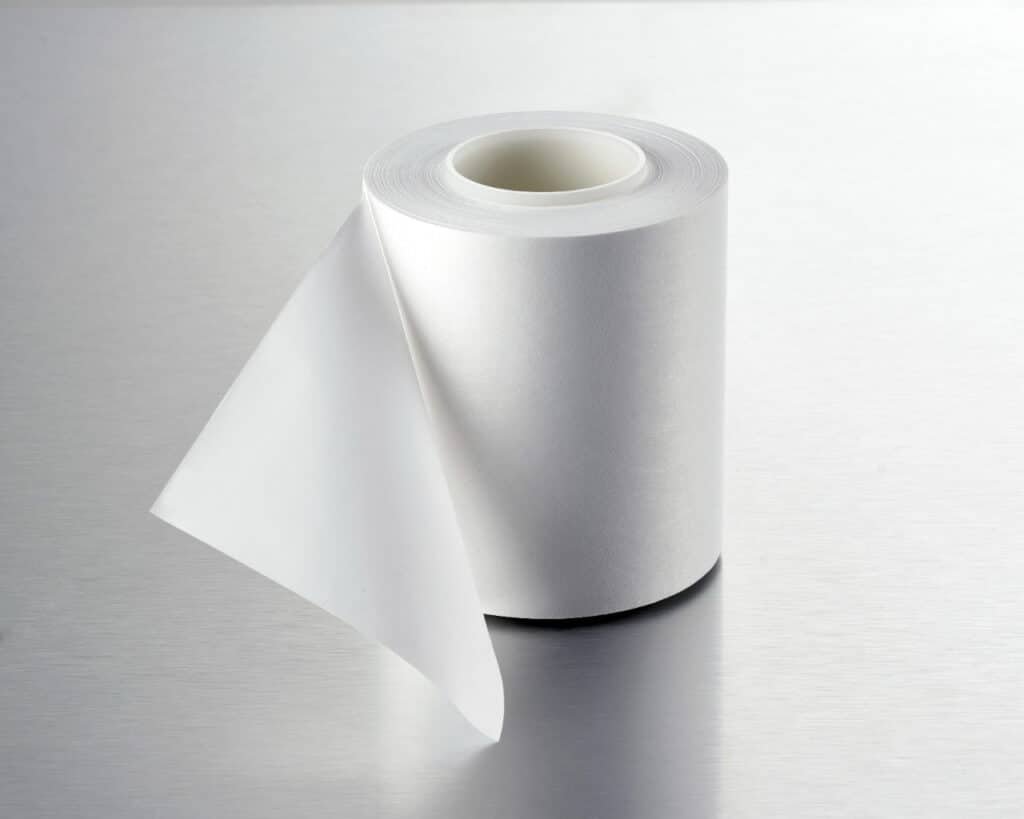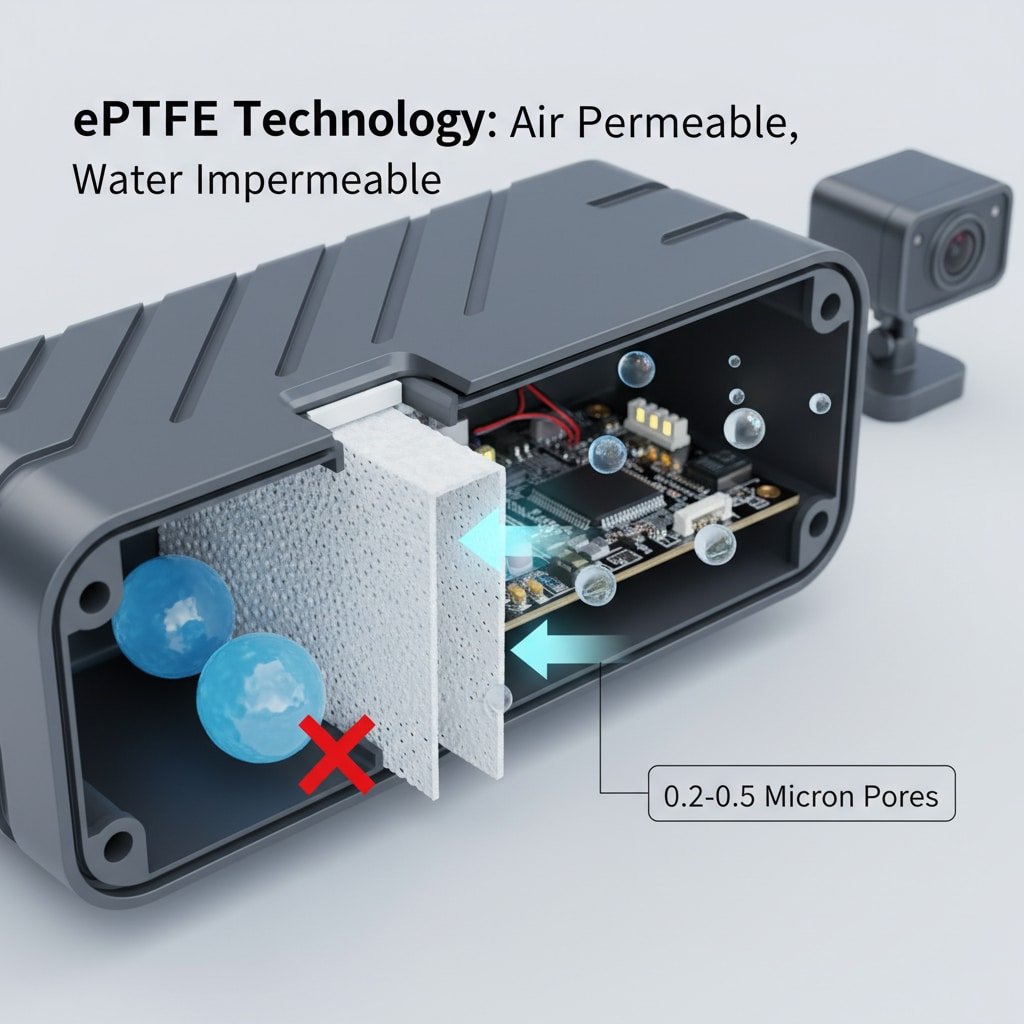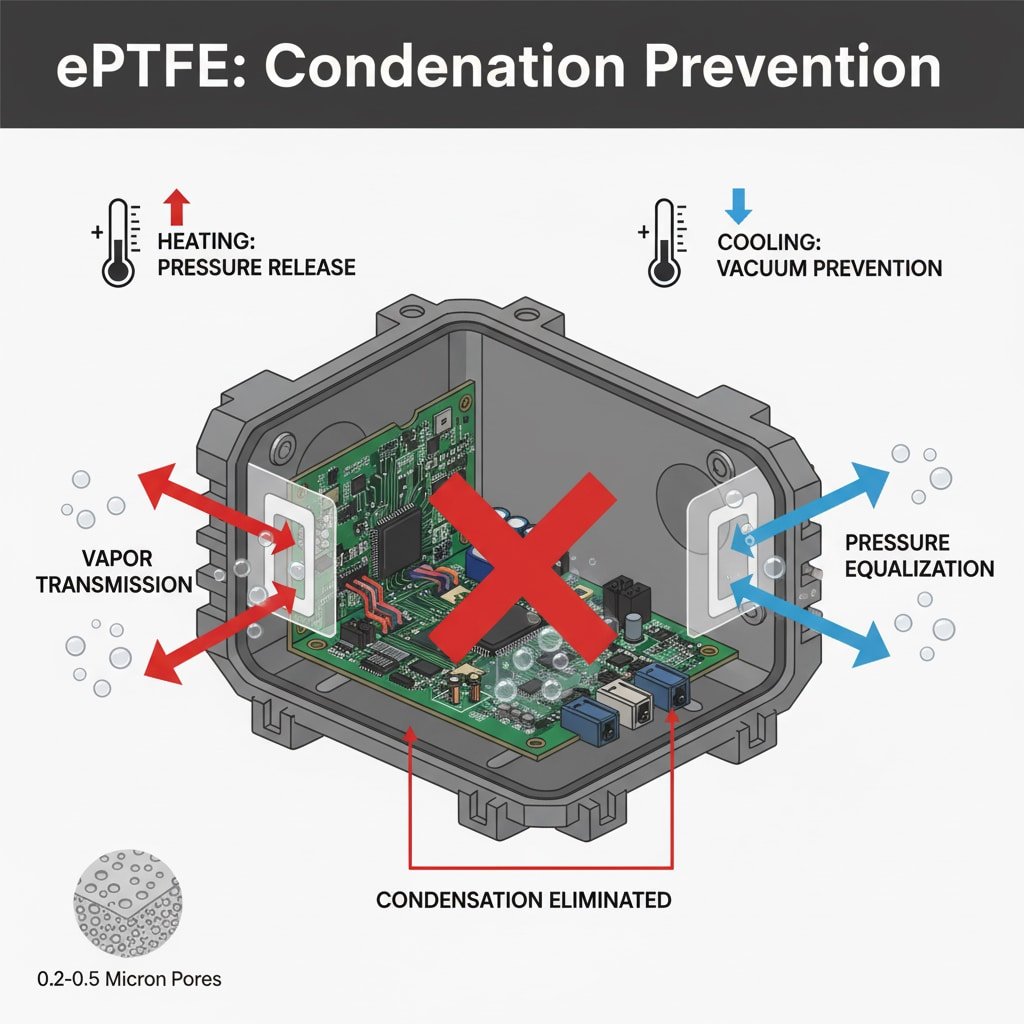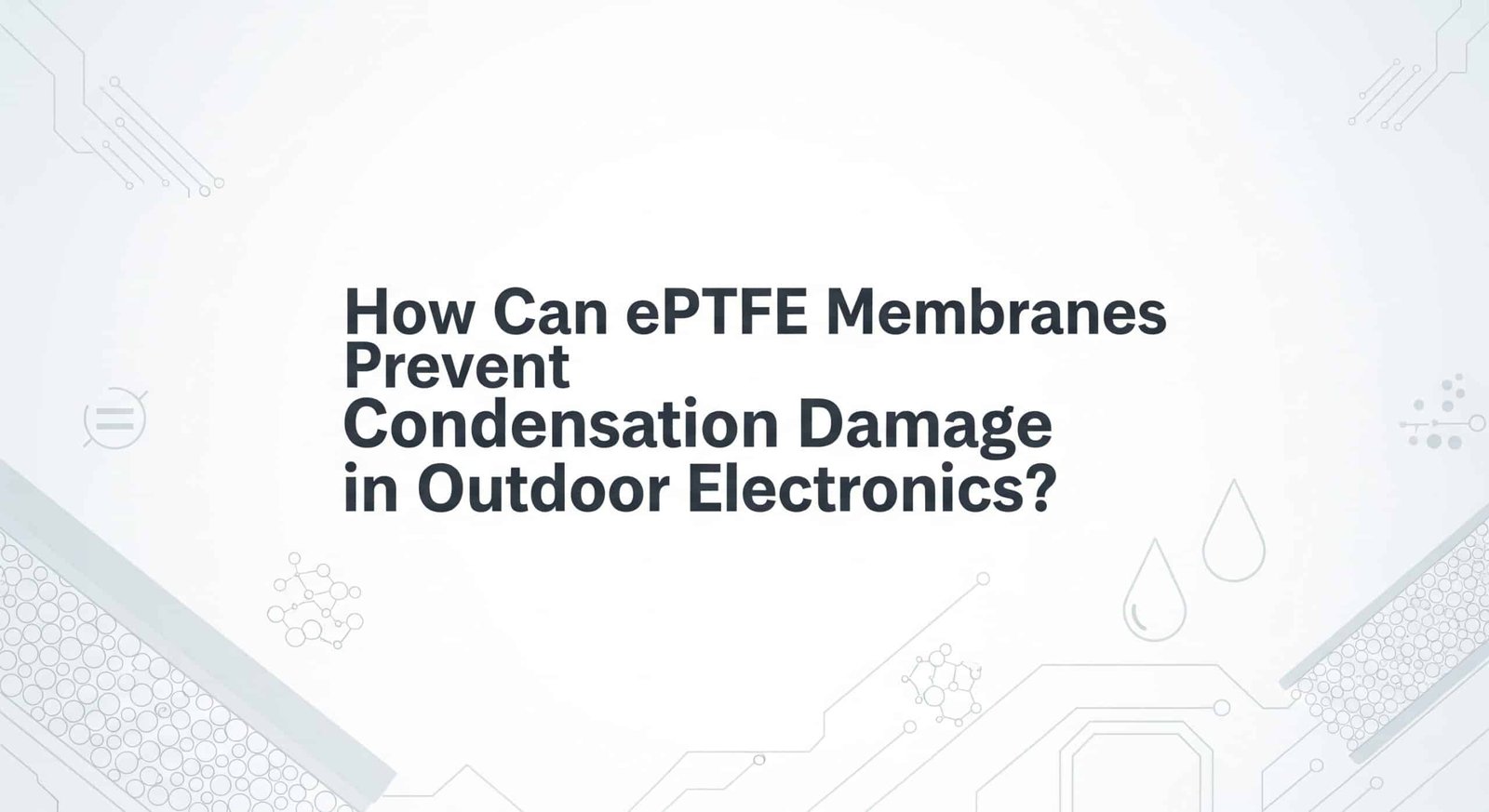
Moisture infiltration destroys thousands of outdoor electronic systems annually, costing companies millions in repairs and replacements. Traditional sealing methods often trap humidity inside enclosures, creating condensation that corrodes circuits and causes catastrophic failures. ePTFE membranes1 provide the ultimate solution by allowing air exchange while blocking water ingress, maintaining pressure equalization2 and preventing condensation buildup in outdoor electronics.
Last winter, I worked with Robert, a controls engineer from a wind farm in Nebraska, whose pneumatic control systems were failing due to moisture-related issues in their outdoor enclosures. After implementing our ePTFE membrane solutions, his maintenance calls dropped by 80%.
Table of Contents
- What Makes ePTFE Membranes Superior for Moisture Protection?
- How Do ePTFE Membranes Prevent Condensation Formation?
- What Are the Key Applications for ePTFE Membrane Protection?
- Why Choose Bepto’s ePTFE Membrane Solutions?
What Makes ePTFE Membranes Superior for Moisture Protection?
Understanding the unique properties of ePTFE technology reveals why it outperforms traditional sealing methods.
ePTFE membranes feature microporous structures with pore sizes of 0.2-0.5 microns, allowing air molecules to pass freely while blocking water droplets that are 700 times larger, creating an ideal barrier for outdoor electronics.

Key Technical Properties
ePTFE membranes offer exceptional performance characteristics:
- Pore Size: 0.2-0.5 microns (blocks 99.9% of particles)
- Water Entry Pressure3: >350 mbar minimum
- Air Permeability4: 5-50 ml/min/cm² at 200 Pa
- Temperature Range: -40°C to +125°C continuous operation
Performance Comparison
| Property | ePTFE Membrane | Traditional Gaskets | Silicone Seals |
|---|---|---|---|
| Water Resistance | IP68 rated5 | IP65 maximum | IP67 typical |
| Air Exchange | Excellent | None | Minimal |
| Temperature Range | -40°C to +125°C | -20°C to +80°C | -50°C to +200°C |
| Condensation Prevention | Superior | Poor | Moderate |
| Lifespan | 10+ years | 2-5 years | 3-7 years |
The microporous structure allows continuous air exchange, preventing the pressure differentials that cause moisture accumulation in sealed enclosures.
How Do ePTFE Membranes Prevent Condensation Formation?
The science behind condensation prevention lies in understanding pressure equalization and vapor transmission.
ePTFE membranes prevent condensation by maintaining pressure equilibrium between enclosure interior and exterior while allowing water vapor to escape, eliminating the temperature-pressure conditions that create moisture buildup.

Condensation Prevention Mechanism
Pressure Equalization
Temperature fluctuations create pressure differentials. ePTFE membranes allow air exchange, preventing:
- Vacuum formation during cooling
- Pressure buildup during heating
- Moisture-laden air entrapment
Vapor Transmission
The membrane’s selective permeability enables:
- Water vapor escape during warming cycles
- Dry air ingress during cooling phases
- Continuous humidity regulation
Real-World Performance Data
Environmental testing shows ePTFE membranes reduce internal humidity by 60-80% compared to sealed enclosures:
- Humidity Reduction: 60-80% average decrease
- Condensation Events: 95% reduction in formation
- Component Lifespan: 3-5x longer operational life
Lisa, a project manager from an outdoor lighting company in Oregon, experienced constant LED driver failures due to condensation. After retrofitting her fixtures with our ePTFE membrane vents, she eliminated 90% of moisture-related warranty claims.
What Are the Key Applications for ePTFE Membrane Protection?
ePTFE membranes excel in demanding outdoor environments where traditional sealing fails.
Critical applications include pneumatic control systems, LED lighting fixtures, telecommunications equipment, and automotive electronics – anywhere moisture ingress threatens sensitive components in temperature-cycling environments.
Primary Application Areas
Industrial Pneumatics
- Rodless cylinder controllers
- Valve position indicators
- Pressure monitoring systems
- Automated machinery controls
Outdoor Electronics
- LED street lighting
- Traffic control systems
- Security cameras and sensors
- Weather monitoring equipment
Automotive Systems
- ECU housings
- Sensor enclosures
- Battery management systems
- Charging station electronics
Installation Considerations
Proper installation maximizes ePTFE membrane effectiveness:
- Positioning: Mount membranes in protected areas away from direct water spray
- Orientation: Install with protective backing facing outward
- Sealing: Ensure complete gasket seal around membrane perimeter
- Maintenance: Inspect annually for physical damage or contamination
Why Choose Bepto’s ePTFE Membrane Solutions?
Our engineering expertise and quality components deliver superior protection for your outdoor electronics.
Bepto offers premium ePTFE membrane vents with custom sizing, rapid delivery, and technical support – providing 40% cost savings compared to OEM solutions while exceeding performance specifications.
Our Membrane Solutions Include:
- Standard Sizes: M12, M16, M20 threaded vents
- Custom Options: Application-specific designs and dimensions
- Quality Assurance: ISO 9001 certified manufacturing
- Technical Support: Free consultation and sizing assistance
Bepto Advantage
| Feature | Bepto Solution | OEM Alternative |
|---|---|---|
| Cost | 40% less expensive | Premium pricing |
| Delivery | 3-5 days standard | 2-4 weeks typical |
| Customization | Available | Limited options |
| Technical Support | Included | Extra cost |
| Warranty | 2 years | 1 year standard |
We’ve helped hundreds of companies protect their outdoor electronics, typically achieving 70-90% reduction in moisture-related failures while cutting component costs significantly. 🌧️
ePTFE membranes represent the most effective solution for preventing condensation damage in outdoor electronics, combining superior moisture protection with reliable pressure equalization.
FAQs About ePTFE Membranes
Q: How long do ePTFE membranes last in outdoor applications?
A: Quality ePTFE membranes typically last 10+ years in outdoor environments. Regular inspection and cleaning can extend lifespan, with replacement recommended when water entry pressure drops below specifications.
Q: Can ePTFE membranes handle extreme temperature cycling?
A: Yes, ePTFE membranes perform reliably from -40°C to +125°C with minimal property changes. The material’s thermal stability makes it ideal for applications with wide temperature swings.
Q: What maintenance do ePTFE membrane vents require?
A: Minimal maintenance is needed – annual visual inspection and gentle cleaning with compressed air. Avoid harsh chemicals or high-pressure washing that could damage the membrane structure.
Q: How do I select the right ePTFE membrane size?
A: Membrane size depends on enclosure volume, temperature range, and air exchange requirements. Our engineering team provides free sizing calculations based on your specific application parameters.
Q: Are ePTFE membranes compatible with pneumatic systems?
A: Absolutely! ePTFE membranes are ideal for pneumatic applications, providing pressure relief while maintaining contamination protection. We offer specialized solutions for rodless cylinders and valve assemblies.
-
Learn about the manufacturing process of expanded Polytetrafluoroethylene (ePTFE) and how its unique microporous structure is created. ↩
-
Understand the physics behind pressure equalization and why it’s essential for preventing vacuum or overpressure conditions in sealed electronics. ↩
-
Explore the standard test methods used to measure a material’s resistance to water penetration under hydrostatic pressure, known as Water Entry Pressure. ↩
-
Discover how air permeability is measured and what the values signify in terms of a membrane’s ability to allow air and water vapor to pass through it. ↩
-
See a detailed chart explaining the Ingress Protection (IP) rating system and what the IP68 standard means for protection against dust and long-term water immersion. ↩



